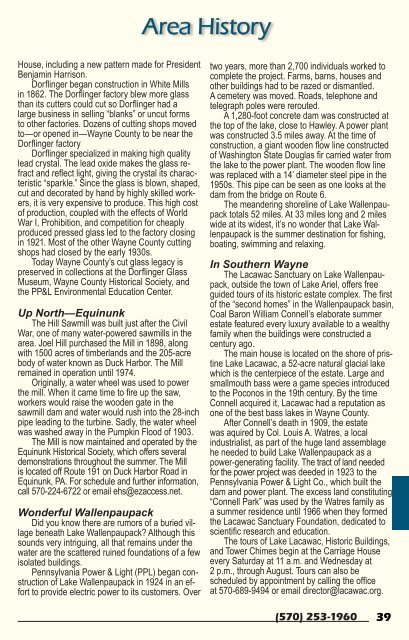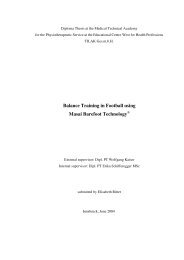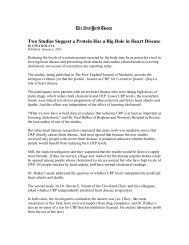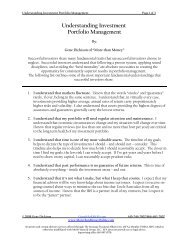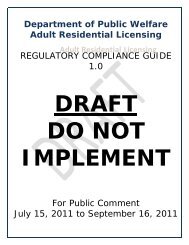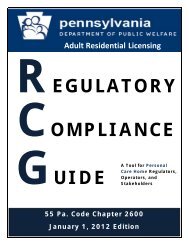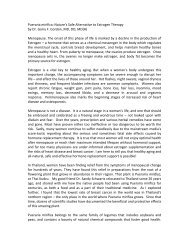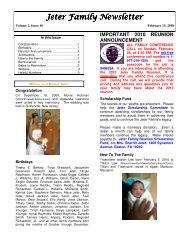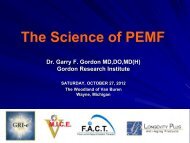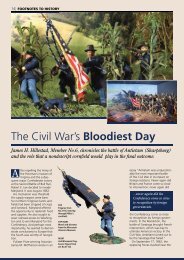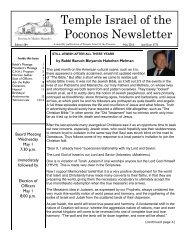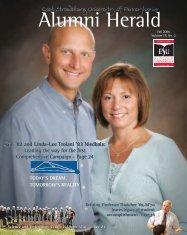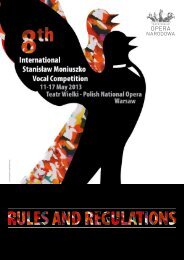2013 Visitor & Relocation Guide For Print.indd - Asoundstrategy
2013 Visitor & Relocation Guide For Print.indd - Asoundstrategy
2013 Visitor & Relocation Guide For Print.indd - Asoundstrategy
You also want an ePaper? Increase the reach of your titles
YUMPU automatically turns print PDFs into web optimized ePapers that Google loves.
House, including a new pattern made for President<br />
Benjamin Harrison.<br />
Dorfl inger began construction in White Mills<br />
in 1862. The Dorfl inger factory blew more glass<br />
than its cutters could cut so Dorfl inger had a<br />
large business in selling “blanks” or uncut forms<br />
to other factories. Dozens of cutting shops moved<br />
to—or opened in—Wayne County to be near the<br />
Dorfl inger factory<br />
Dorfl inger specialized in making high quality<br />
lead crystal. The lead oxide makes the glass refract<br />
and refl ect light, giving the crystal its characteristic<br />
“sparkle.” Since the glass is blown, shaped,<br />
cut and decorated by hand by highly skilled workers,<br />
it is very expensive to produce. This high cost<br />
of production, coupled with the effects of World<br />
War I, Prohibition, and competition for cheaply<br />
produced pressed glass led to the factory closing<br />
in 1921. Most of the other Wayne County cutting<br />
shops had closed by the early 1930s.<br />
Today Wayne County’s cut glass legacy is<br />
preserved in collections at the Dorfl inger Glass<br />
Museum, Wayne County Historical Society, and<br />
the PP&L Environmental Education Center.<br />
Up North—Equinunk<br />
The Hill Sawmill was built just after the Civil<br />
War, one of many water-powered sawmills in the<br />
area. Joel Hill purchased the Mill in 1898, along<br />
with 1500 acres of timberlands and the 205-acre<br />
body of water known as Duck Harbor. The Mill<br />
remained in operation until 1974.<br />
Originally, a water wheel was used to power<br />
the mill. When it came time to fi re up the saw,<br />
workers would raise the wooden gate in the<br />
sawmill dam and water would rush into the 28-inch<br />
pipe leading to the turbine. Sadly, the water wheel<br />
was washed away in the Pumpkin Flood of 1903.<br />
The Mill is now maintained and operated by the<br />
Equinunk Historical Society, which offers several<br />
demonstrations throughout the summer. The Mill<br />
is located off Route 191 on Duck Harbor Road in<br />
Equinunk, PA. <strong>For</strong> schedule and further information,<br />
call 570-224-6722 or email ehs@ezaccess.net.<br />
Wonderful Wallenpaupack<br />
Did you know there are rumors of a buried village<br />
beneath Lake Wallenpaupack? Although this<br />
sounds very intriguing, all that remains under the<br />
water are the scattered ruined foundations of a few<br />
isolated buildings.<br />
Pennsylvania Power & Light (PPL) began construction<br />
of Lake Wallenpaupack in 1924 in an effort<br />
to provide electric power to its customers. Over<br />
Area History<br />
two years, more than 2,700 individuals worked to<br />
complete the project. Farms, barns, houses and<br />
other buildings had to be razed or dismantled.<br />
A cemetery was moved. Roads, telephone and<br />
telegraph poles were rerouted.<br />
A 1,280-foot concrete dam was constructed at<br />
the top of the lake, close to Hawley. A power plant<br />
was constructed 3.5 miles away. At the time of<br />
construction, a giant wooden fl ow line constructed<br />
of Washington State Douglas fi r carried water from<br />
the lake to the power plant. The wooden fl ow line<br />
was replaced with a 14’ diameter steel pipe in the<br />
1950s. This pipe can be seen as one looks at the<br />
dam from the bridge on Route 6.<br />
The meandering shoreline of Lake Wallenpaupack<br />
totals 52 miles. At 33 miles long and 2 miles<br />
wide at its widest, it’s no wonder that Lake Wallenpaupack<br />
is the summer destination for fi shing,<br />
boating, swimming and relaxing.<br />
In Southern Wayne<br />
The Lacawac Sanctuary on Lake Wallenpaupack,<br />
outside the town of Lake Ariel, offers free<br />
guided tours of its historic estate complex. The fi rst<br />
of the “second homes” in the Wallenpaupack basin,<br />
Coal Baron William Connell’s elaborate summer<br />
estate featured every luxury available to a wealthy<br />
family when the buildings were constructed a<br />
century ago.<br />
The main house is located on the shore of pristine<br />
Lake Lacawac, a 52-acre natural glacial lake<br />
which is the centerpiece of the estate. Large and<br />
smallmouth bass were a game species introduced<br />
to the Poconos in the 19th century. By the time<br />
Connell acquired it, Lacawac had a reputation as<br />
one of the best bass lakes in Wayne County.<br />
After Connell’s death in 1909, the estate<br />
was aquired by Col. Louis A. Watres, a local<br />
industrialist, as part of the huge land assemblage<br />
he needed to build Lake Wallenpaupack as a<br />
power-generating facility. The tract of land needed<br />
for the power project was deeded in 1923 to the<br />
Pennsylvania Power & Light Co., which built the<br />
dam and power plant. The excess land constituting<br />
“Connell Park” was used by the Watres family as<br />
a summer residence until 1966 when they formed<br />
the Lacawac Sanctuary Foundation, dedicated to<br />
scientifi c research and education.<br />
The tours of Lake Lacawac, Historic Buildings,<br />
and Tower Chimes begin at the Carriage House<br />
every Saturday at 11 a.m. and Wednesday at<br />
2 p.m., through August. Tours can also be<br />
scheduled by appointment by calling the offi ce<br />
at 570-689-9494 or email director@lacawac.org.<br />
(570) 253-1960<br />
39


